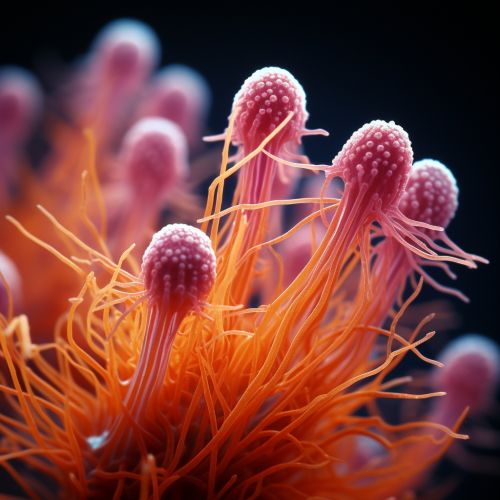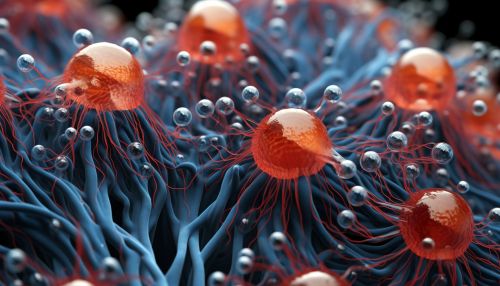Shewanella putrefaciens
Taxonomy and Nomenclature
The bacterium Shewanella putrefaciens is a species in the genus Shewanella, which is part of the family Shewanellaceae. The genus was first described by MacDonell and Colwell in 1985, and it currently contains more than 50 recognized species. The specific epithet putrefaciens is derived from the Latin word for putrefaction, reflecting the bacterium's ability to cause spoilage in food products.


Description and Characteristics
Shewanella putrefaciens is a Gram-negative, rod-shaped bacterium that is motile by means of a single polar flagellum. It is a facultative anaerobe, meaning it can grow in both the presence and absence of oxygen. The bacterium is psychrophilic, or cold-loving, with an optimal growth temperature of around 20 degrees Celsius. It is also halotolerant, capable of surviving in environments with high salt concentrations.
The bacterium is catalase-positive and oxidase-positive, and it can reduce a variety of inorganic substances, including iron, manganese, and sulfur compounds. This ability to perform dissimilatory metal reduction is a key characteristic of the Shewanella genus and has important implications for biogeochemical cycling and bioremediation.
Habitat and Distribution
Shewanella putrefaciens is widely distributed in nature and can be found in a variety of environments. It is particularly prevalent in aquatic environments, including both freshwater and marine habitats. The bacterium has been isolated from a range of locations, from the deep sea to Antarctic ice. Its ability to survive in such diverse and often extreme environments is largely due to its metabolic versatility and its capacity for anaerobic respiration using a range of electron acceptors.
Role in Food Spoilage
One of the primary areas of interest with Shewanella putrefaciens is its role in food spoilage. The bacterium is a common cause of spoilage in fish and other seafood, where it can produce a variety of unpleasant odors and flavors. It is also capable of producing a biofilm on the surface of food products, which can protect the bacteria from disinfectants and contribute to spoilage.
Biotechnological Applications
Despite its role in food spoilage, Shewanella putrefaciens also has potential for a variety of biotechnological applications. Its ability to reduce a wide range of inorganic substances, including toxic metals and radionuclides, makes it a promising candidate for use in bioremediation. The bacterium could potentially be used to clean up contaminated environments or to recover valuable metals from waste streams.
In addition, Shewanella putrefaciens has been studied for its potential use in microbial fuel cells. These are devices that use bacteria to convert organic matter into electricity, and the electron-transport capabilities of Shewanella putrefaciens make it a promising candidate for this application.
